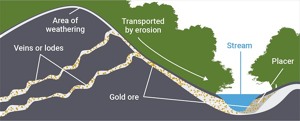Tavex uses cookies to ensure website functionality and improve your user experience. Collecting data from cookies helps us provide the best experience for you, keeps your account secure and allows us to personalise advert content. You can find out more in our cookie policy.
Please select what cookies you allow us to use
Cookies are small files of letters and digits downloaded and saved on your computer or another device (for instance, a mobile phone, a tablet) and saved in your browser while you visit a website. They can be used to track the pages you visit on the website, save the information you enter or remember your preferences such as language settings as long as you’re browsing the website.
| Cookie name | Cookie description | Cookie duration |
|---|---|---|
| tavex_cookie_consent | Stores cookie consent options selected | 60 weeks |
| tavex_customer | Tavex customer ID | 30 days |
| wp-wpml_current_language | Stores selected language | 1 day |
| AWSALB | AWS ALB sticky session cookie | 6 days |
| AWSALBCORS | AWS ALB sticky session cookie | 6 days |
| NO_CACHE | Used to disable page caching | 1 day |
| PHPSESSID | Identifier for PHP session | Session |
| latest_news | Helps to keep notifications relevant by storing the latest news shown | 29 days |
| latest_news_flash | Helps to keep notifications relevant by storing the latest news shown | 29 days |
| tavex_recently_viewed_products | List of recently viewed products | 1 day |
| tavex_compare_amount | Number of items in product comparison view | 1 day |
| Cookie name | Cookie description | Cookie duration |
|---|---|---|
| chart-widget-tab-*-*-* | Remembers last chart options (i.e currency, time period, etc) | 29 days |
| archive_layout | Stores selected product layout on category pages | 1 day |
| Cookie name | Cookie description | Cookie duration |
|---|---|---|
| cartstack.com-* | Used for tracking abandoned shopping carts | 1 year |
| _omappvp | Used by OptinMonster for determining new vs. returning visitors. Expires in 11 years | 11 years |
| _omappvs | Used by OptinMonster for determining when a new visitor becomes a returning visitor | Session |
| om* | Used by OptinMonster to track interactions with campaigns | Persistent |
| Cookie name | Cookie description | Cookie duration |
|---|---|---|
| _ga | Used to distinguish users | 2 years |
| _gid | Used to distinguish users | 24 hours |
| _ga_* | Used to persist session state | 2 years |
| _gac_* | Contains campaign related information | 90 days |
| _gat_gtag_* | Used to throttle request rate | 1 minute |
| _fbc | Facebook advertisement cookie | 2 years |
| _fbp | Facebook cookie for distinguishing unique users | 2 years |
How Gold is Formed and Where Does it Come From?

Gold, a symbol of wealth and beauty, has captivated human imagination for centuries. But its story extends far beyond earthly treasures. Originating from the supernovae, gold is a cosmic product, formed during the explosive death of stars. This process, known as supernova nucleosynthesis, scatters gold atoms across the universe, eventually integrating them into planets, including Earth.
On our planet, gold emerges through two primary geological processes: hydrothermal activity and placer deposits. These processes embed gold in the Earth’s crust and disperse it in riverbeds and sedimentary environments, shaping its distribution and accessibility.
This article explores gold’s journey from the far reaches of space to the depths of our planet, highlighting its formation, mining, and the global impact of its reserves. Uncover the compelling story of gold, a testament to the universe’s complexity and our enduring fascination with this precious metal.
Where Does Gold Come From

Gold’s origin story is as fascinating as it is scientifically significant. The process known as supernova nucleosynthesis. This occurs during the implosion of a star, is responsible for creating many elements, including gold.
In these cataclysmic events, the massive explosion and subsequent high temperatures reaching millions of degrees foster the formation of gold atoms. This gold is then cast into space, eventually becoming part of the matter that forms new stars and planetary bodies.
Earth’s own gold reserves are believed to have originated from such cosmic events. This makes every piece of gold a tiny fragment of a star’s dramatic life cycle.
How Gold is Formed
On Earth, gold is primarily formed through two geological processes: hydrothermal processes and placer deposits.
- Hydrothermal processes involve the movement of hot, mineral-rich fluids through Earth’s crust, which deposit gold into cracks and veins within rocks. This process forms the gold veins that are often mined for the metal.
- On the other hand, placer deposits form when gold particles are eroded from these veins and carried away by water streams. Over time, these particles accumulate in riverbeds or other areas where the water’s speed decreases. This creates deposits that are relatively easier to mine due to their proximity to the Earth’s surface.

Natural Gold Formation
Gold’s formation within the Earth’s crust is a geological marvel. The presence of specific geologic conditions, particularly hot fluids and reactive host rocks, is crucial for the deposition of gold.

As these hot fluids travel through the crust, they interact with rocks like shale, sandstone, and granite, which are particularly receptive to gold deposition.
The gold, carried by these fluids, is left behind in the form of veins or dispersed particles as the fluids cool or react with the rocks.
Synthesising Gold
The artificial synthesis of gold, while a topic of scientific intrigue, remains largely theoretical and economically unfeasible. Creating gold through nuclear reactions or using particle accelerators would require an immense amount of energy and resources, far outweighing the value of the gold produced.
This makes the synthesis of gold more of an academic interest than a practical method of production.
Gold Ore Mining

Gold mining is a complex and varied process. It depends heavily on the type of gold deposit and the geology of the area. Techniques such as underground mining, open-pit mining, and alluvial mining are employed to extract gold ore. Each of these methods has its own set of challenges and environmental impacts, such as the high temperatures the extraction uses.
Once the gold ore extraction, the gold undergoes a series of processes, including crushing, grinding, and various concentration methods, to separate gold from the surrounding material. The chemical processes like cyanide, though effective in extracting gold and gold processing, raises significant environmental and safety concerns, especially when on a large scale.
Global Gold Reserves
The estimated 197,576 metric tons of gold in global reserves highlight the metal’s rarity and enduring value. These reserves are unevenly distributed across the globe, with countries like the United States, Germany, and Italy holding the largest stocks.
This distribution reflects not only the geological availability of gold but also historical, economic, and political factors that have influenced the accumulation and storage of gold over centuries.
The reserves held by these countries serve various purposes, from backing currency to serving as a financial safety net during economic crises.
Conclusion
The story of gold, from its origins to its earthly abundance, weaves a captivating tale of cosmic events, geological processes, and human endeavours. On Earth, its formation through hydrothermal processes and placer deposits reflects the complex interplay of geology and chemistry that occurs beneath our feet.
The various methods of mining pure gold, while essential for economic development, also remind us of the environmental and ethical responsibilities that come with extracting such a precious resource. The global distribution of gold reserves, highlighting both the abundance and scarcity of this metal, underscores its enduring value and significance in human society.
Gold’s story is more than just a tale of wealth and adornment; it is a narrative of scientific wonder, geological marvels, and a symbol of human aspiration. As we continue to explore and understand this precious metal, gold remains not only a treasure of the earth but also a symbol of the enduring curiosity and ingenuity of humankind.

















